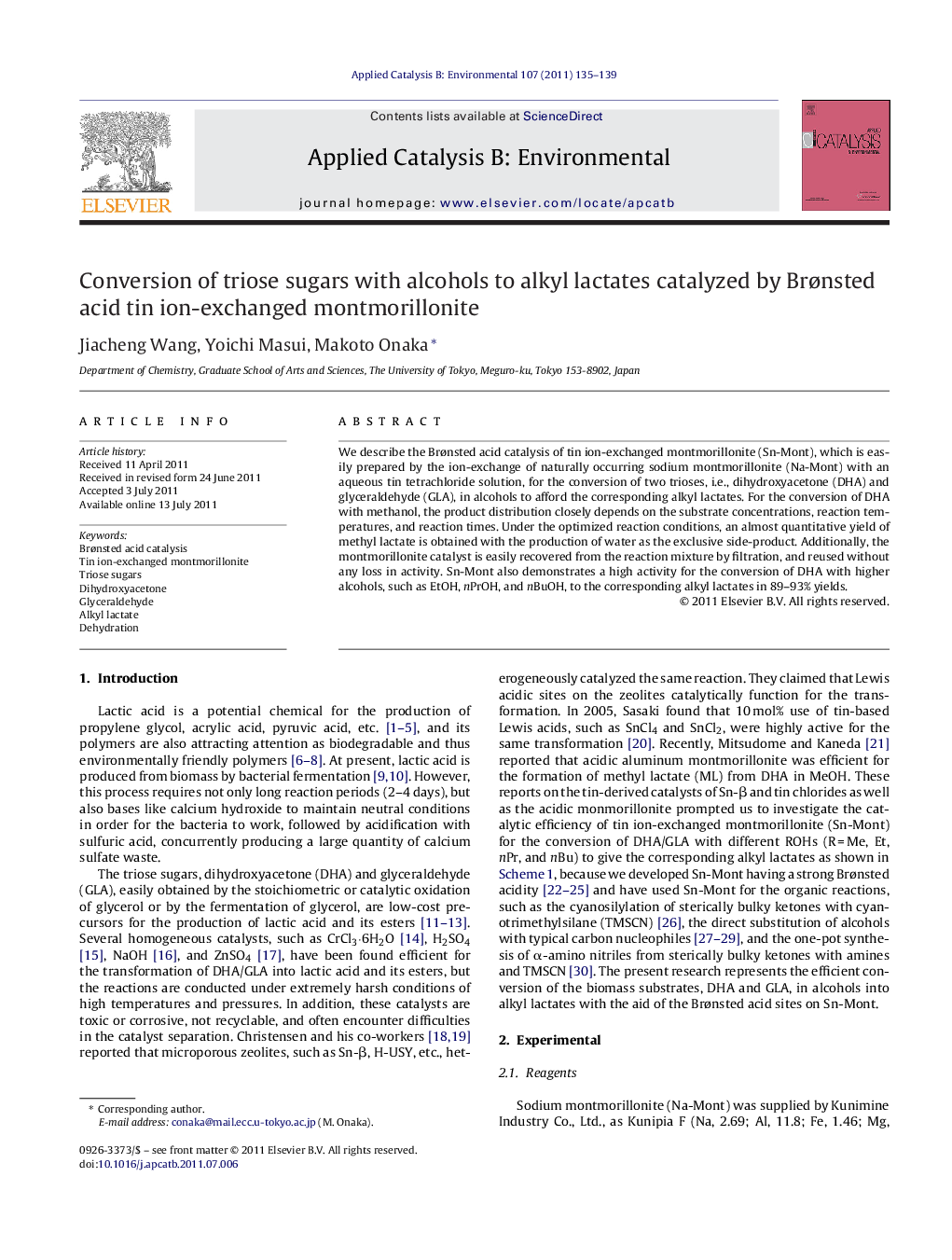| Article ID | Journal | Published Year | Pages | File Type |
|---|---|---|---|---|
| 46731 | Applied Catalysis B: Environmental | 2011 | 5 Pages |
We describe the Brønsted acid catalysis of tin ion-exchanged montmorillonite (Sn-Mont), which is easily prepared by the ion-exchange of naturally occurring sodium montmorillonite (Na-Mont) with an aqueous tin tetrachloride solution, for the conversion of two trioses, i.e., dihydroxyacetone (DHA) and glyceraldehyde (GLA), in alcohols to afford the corresponding alkyl lactates. For the conversion of DHA with methanol, the product distribution closely depends on the substrate concentrations, reaction temperatures, and reaction times. Under the optimized reaction conditions, an almost quantitative yield of methyl lactate is obtained with the production of water as the exclusive side-product. Additionally, the montmorillonite catalyst is easily recovered from the reaction mixture by filtration, and reused without any loss in activity. Sn-Mont also demonstrates a high activity for the conversion of DHA with higher alcohols, such as EtOH, nPrOH, and nBuOH, to the corresponding alkyl lactates in 89–93% yields.
Graphical abstractTin ion-exchanged montmorillonite (Sn-Mont), a heterogeneous, recyclable, strong Brønsted acid, demonstrated a high catalytic activity and selectivity for the conversion of two trioses (DHA and GLA) with alcohols into the corresponding alkyl lactates in excellent yields with the production of water as the main by-product.Figure optionsDownload full-size imageDownload as PowerPoint slideHighlights• Tin ion-exchanged montmorillonite efficiently promotes the dehydration of triose sugars. • Brønsted acidic sites function as major active sites. • Dihydroxyacetone and glyceraldehyde are both suitable substrates. • Various alkyl lactates are obtained in excellent yields of 89–97%. • The heterogeneous catalyst can be reused for several times without loss of activity.
